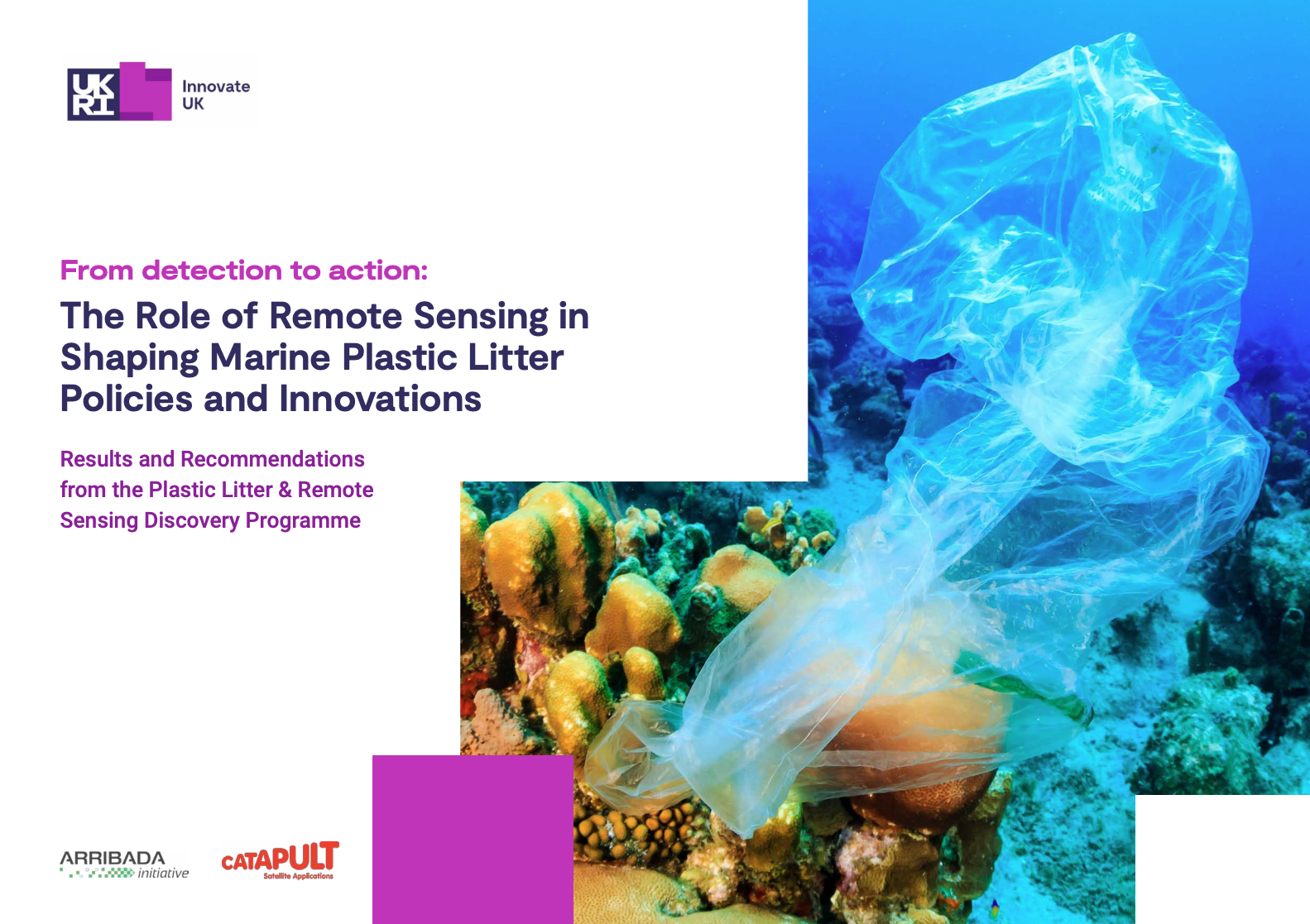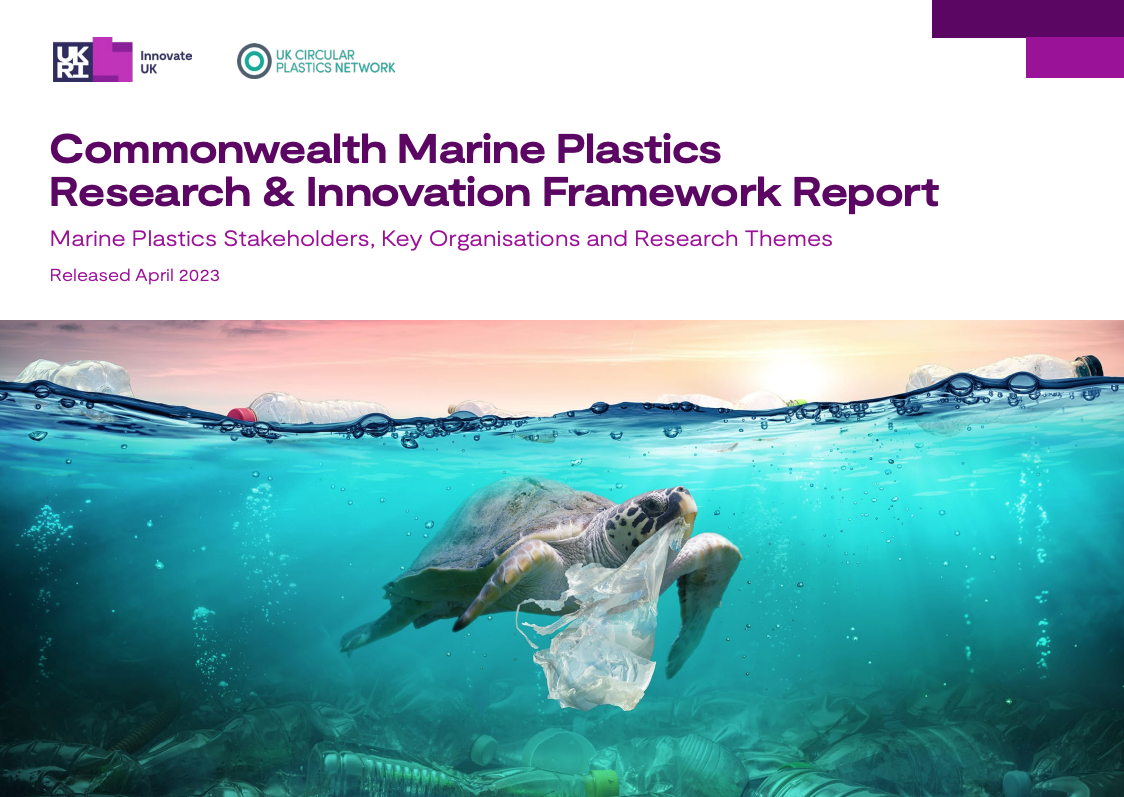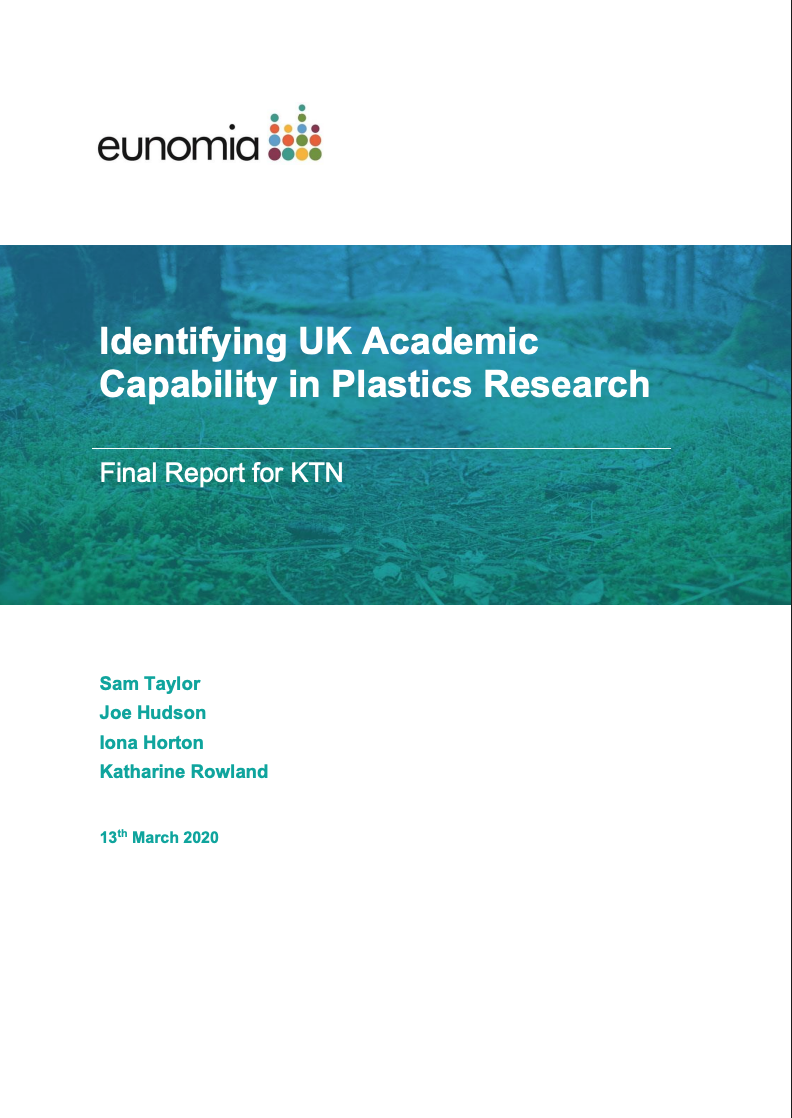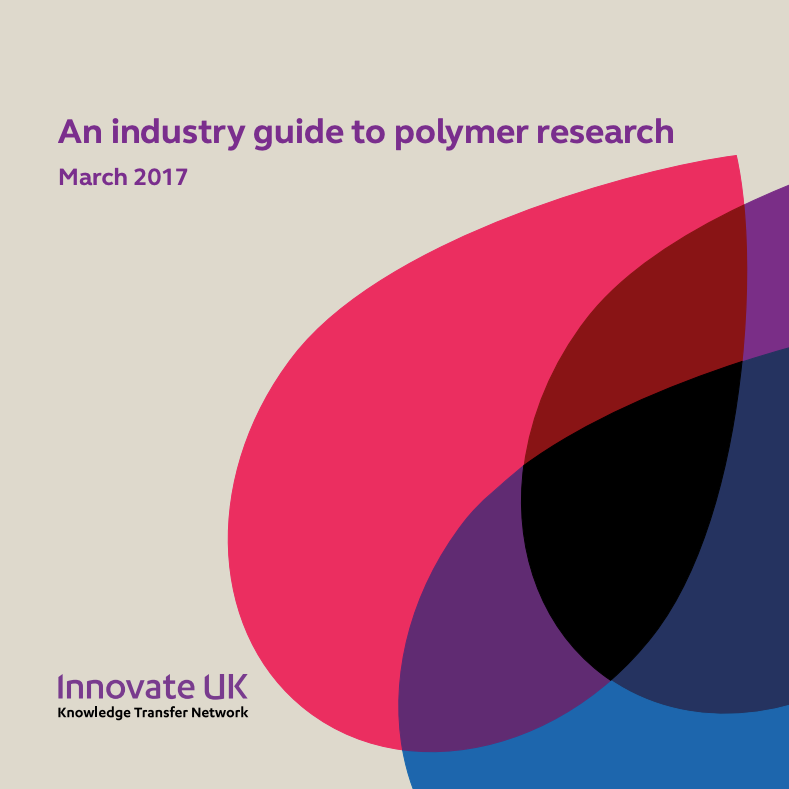UK Circular Plastics Network (UKCPN)
The UK Circular Plastics Network (UKCPN) aims to bring together the diverse users of plastic products and realise the best means for reducing plastic waste entering the environment through a programme of networking and knowledge-sharing events and related support activities.
UKCPN is an Innovate UK and UK Research and Innovation (UKRI) supported activity that exists to engage innovators, scientists and changemakers to move towards a more circular economy for plastics. We value polymers that support a net zero future. UKCPN runs events and activities to bring together the diverse users of plastic products and realise the best means for reducing plastic waste.
The Circular Plastics Network (UKCPN) has created a coordinated, integrated and aligned community of stakeholders in order to share best practice, focused on unlocking the most critical, short term barriers to plastics circularity.
UKCPN facilitates:
- Eliminating the volume of plastic waste arising from within the UK.
- Raising awareness and sharing best practice to improve the rate of UK plastic recycling.
- Sharing best practice to reduce levels of confusion amongst citizens and highlighting user-centred design.
- Showcasing innovation that is focused on reducing the amount of plastic ending up in the environment.
UKCPN is an activity supported by UK Research and Innovation and forms part of the Plastics Research Innovation Fund (PRIF), which is engaging Britain’s best scientists and innovators to help move the country towards more circular economic and sustainable approaches to plastics.
Focus Areas
-
Polymer Research
To help our members understand the landscape, we have produced a number of documents, compiled using data from published university research, the UK Research Councils, Innovate UK. Our staff also undertake visits and have numerous individual discussions with leading academics and research and training organisations’ staff.
About Polymers
Polymers range from hard to very soft materials, and both synthetic and natural polymers play an essential part in everyday life. Polymers are studied with their disciplines of biophysics, macromolecular science, polymer science, polymer chemistry, polymer physics, and latterly, academic institutions have been investigating citizen interactions using behavioural science to understand the systems in which polymers are used.
Almost all polymer research in the UK is funded either by companies in their internal R&D departments or by governments, primarily carried out through universities funded by UKRI. Businesses also tend to collaborate with large academic institutions due to the specialised and costly equipment that is best suited to the university environment.
Two reports have been carried out by Innovate UK Business Connect:
- Industry Guide to Polymer Research
- UK Academic Capability in Plastics Research, produced in conjunction with Eunomia.
If you like further information and connections to the academics, please join our network and contact us directly.
-
The loss of fishing gear
When considering the environmental impact of fishing gear we also need to consider multiple factors including polymer types, ghost fishing, microplastics shed through abrasion, the longevity of polymers in fishing gear, ‘End of Life’ (EoL) and the circularity of fishing gear.
What is the Challenge?
Approximately 11.5 million tonnes of plastic enter the ocean every year. Intentional or unintentional loss of fishing gear & aquaculture equipment equates to approximately 20% of marine plastic litter.
The Food and Agriculture Organisation of the United Nations (FAO) estimates that in 2020 around 58.5 million people worldwide were employed in primary fish production. 600 million people rely on the fisheries and aquaculture sector for their livelihoods.
Fishing gear is designed to be robust and to have longevity in harsh conditions. These design requirements globally impact the aquatic environment, sustainable fishing, materials circularity and human health.
Barriers
In order to redesign, reuse, recycle fishing gear and aquaculture equipment and to valorise the polymer content we need to consider:
- Identifying polymer type and mixed polymer content
- Contamination of fishing gear
- Sorting – labour intensive
- Low value of the mixed recyclate
- Geographic location of fishing activity
- Type of fishing activity (demersal, mid-water, pelagic trawls, seine nets, gillnets, longlines, traps, pots or other)
- Available infrastructure for recycling EoL fishing & aquaculture equipment (collection, storage, sorting, processing)
Drivers: Climate change and the role of a healthy aquatic environment
- Need to conserve aquatic food stocks and reduce overfishing by ghost fishing.
- The longevity of polymers in fishing gear can result in ghost fishing years after the gear has been lost or abandoned.
- Loss of valuable polymers from the supply chain.
- Extended Producer Responsibility – the need for ownership and traceability of ’end of life’ fishing gear.
- Valorising plastics within fishing gear by regulation and standardisation.
- Human health (microplastics found in aquatic animals/consumed by humans).
- Reduction in fishing and aquaculture gear going to landfill.
Biodegradable Fishing Nets
INdiGO is an innovative Interreg project which aims to reduce plastic pollution at sea by developing biodegradable fishing nets; specifically reducing the amount of plastic in the Channel area of the UK and France.
Ocean Recovery Project
Keep Britain Tidy and plastic processing experts Milspeed have worked together to develop the only fully UK-based trawl net recycling scheme. Until its launch, the only options were sending the nets to landfill or exporting them to Europe for recycling.
Dsolve
Led by The Arctic University of Norway, Dsolve research aims to reduce plastic litter and associated problems (ghost fishing, macro and microplastic) caused by the fishery and aquaculture industries. Projects include: Circularity of bio-based, biodegradable and non-degradable plastics. Led by Cecilia Askham, PhD.
-
Polymer material flows are truly global, both upstream manufacture, and throughout their whole life cycle including transportation worldwide for conversion to product; then as import/exports for the use phase then downstream to end of life. Where there is insufficient infrastructure often, unfortunately, fugitive material may end up uncontrolled in the environment. This is why International activities are important to UKCPN and the wider plastics sustainability community.
Our International Activity
Plastic supply chains are global and to ensure the UK and global systems are more sustainable we work with stakeholders internationally.
The UKCPN team work with Innovate UK Business Connect‘s Global Alliance Africa project funded by the UK’s Official Development Assistance (ODA). There are a number of specific plastic related ‘Innovation Challenges’ in Kenya, Nigeria and South Africa – please contact us to be connected and find out more.
At UKCPN we will keep our members informed of how activity on the Global Plastics Treaty is progressing and, where innovation is concerned, inform the relevant bodies about potential solutions to the issue. The most recent documentation is available here.
We have also developed a Commonwealth Marine Plastics Research & Innovation Framework Report which provides provides an overview of the context, national strategies, policies and Research and Innovation (R&I) activities in each of the four pilot countries identified: India, South Africa, Canada and the UK.
Global Plastics Treaty
Following an historic resolution in March 2022, the UN has been working for two years to develop a global legally binding treaty to end unnecessary plastic pollution by the end of 2024. However, the during the final round of negotiations held in Busan in the Republic of Korea between the 25th November and 1st December, UN member states were not able to reach an agreement and the session was suspended.
Even though no agreement was reached, however, the UN has reported that the negotiating committee has made significant progress towards a deal by agreeing on a text that should serve as a basis for negotiations at further meetings in 2025. In parallel to this, many countries have pledged to keep working on national action to fight plastic pollution.
The role of remote sensing in tackling marine plastic litter
Plastic pollution is a global issue, and data gathered through remote sensing has an increasingly important role to play in identifying and monitoring fugitive plastics in terrestrial and marine environments. Funded by UKRI’s Smart Sustainable Plastic Packaging Challenge and delivered by Innovate UK, the Plastic Litter & Remote Sensing Discovery Programme, has carried out a scoping study. The research has identified what measures are needed to ensure that these technologies can offer scalable solutions for efficiently monitoring plastic litter and help inform and support evidence-based policy making.
Commonwealth Marine Plastics Research and Innovation Framework
The UKCPN team has developed a commonwealth framework report to help find and implement solutions to stop plastic waste entering the ocean by sharing best practices, leveraging funding and championing global action in marine plastic pollution. The coordination between countries is a priority for successful future collaborations to assess and help policymakers better understand the issues and actions that will be effective to address the impact of marine plastics on a global scale.
-
What are microplastics?
Microplastics are defined as solid plastic particles less than 5mm in size. In recent years, microplastics have become recognised as a widespread and pervasive environmental pollutant, present globally within water, soil and the air.
Microplastics may be either primary (designed and manufactured to be of a small size) or secondary (broken or shed from larger items). Research is currently being carried out to understand where and how microplastics form, disperse and accumulate within the environment. Additionally, work is underway to understand the environmental and ecological implications of microplastics, including considering health effects on both wildlife and humans.While microplastics may have unintended consequences if they end up within the environment, microplastics, and the larger plastics that can form them, have myriad useful and often essential applications. It is therefore crucial to ensure that society can continue to reap the benefits of these materials, while limiting any negative consequences. This requires having sufficient knowledge to inform our future actions, and the capabilities to act on this knowledge. To further progress the research and develop novel technologies, solutions and mitigation strategies to reduce environmental input and hazard, will require concerted interdisciplinary efforts. As such, this network aims to link those who are approaching this issue from multiple angles, including academia, government, industry, charities, consultancies and more.
Drivers, barriers and studies for solutions
- Microplastics have been detected throughout ecosystems globally from depths of the oceans to high altitude of Mount Everest.
- Potential risks to human health due to exposure from microplastics in the air, food and drinking water.
- Data gaps regarding the toxicological impact of microplastics.
- Vast range of materials differing in shape, size, chemical composition, colour, density and toxicity.
- Wide range of sources including run –off and abrasion from roads, tyre wear, agriculture, sewage sludge, synthetic fibres from laundry, cosmetics, fragmentation of larger plastics.
Background to the network
The UK Microplastics Network was established in 2017 by Dr Alice Horton, National Oceanographic Centre, with funding from the Natural Environment Research Council (NERC), in response to the growing need for wider stakeholder understanding and involvement in the field of microplastics research. In 2019, the network joined with UKCPN to enable greater benefits for members of both networks with respect to access to resources, information and networking opportunities. Given the increasing recognition that the plastics issue must be targeted at all scales and across all parts of the supply and demand chain, it is a therefore a rational evolution for the UK Microplastics Network to become hosted within the UK Circular Plastics Network.
Our objectives
- Facilitate communication between researchers and stakeholders
- Identify diverse relevant skills, facilities and funding sources which can assist in development of microplastics research
- Develop strategies for tackling the issue through collaborative working
- Economic benefits to businesses and organisations who can gain advice and plan for future legislation that may impact their products and business
- Informing evidence-based decision making on microplastics policy and legislation
Focus on Microplastics at GRIPS
Microplastics are a complex and widespread pollutant of growing concern. During GRIPS2021, GRIPS2022 & GRIPS2023 our expert speakers have engaged us with:
- Microfibres and Microplastics within the Environment
- Measuring, Monitoring, Mitigating Fugitive Plastic
- Microplastics detection and consequences for the environment, ecosystems and human health.
The sessions have looked at synthetic vs natural microfibres, the impact of microfibres and fibre fragments and the innovative measures to reduce them. Have questioned how we can tackle the microplastics problem? Even with sufficient infrastructure in place there is still leakage and poor behaviour leading to litter in the environment. The experts share the state of the knowledge alongside current recommendations, considerations and challenges for the study of microplastics both in the environment and within human tissues.
-
The impact of polymer in textiles cannot be understated: Nearly all textile fibres are made from polymers, whether they are polyester, cotton, nylon, wool, or some other niche material. Broadly, around 60% of those are synthetic polymers, which are plastics. Polyester accounts for nearly all synthetic polymers, with a small amount of nylon making up the rest. So fibres constructed from fossil sources make up well over half of the total amount of textile produced globally, and this figure is increasing because polyester costs less than cotton.
Impact of Polymers in Textiles
In 2017, European households consumed about 13 million tonnes of textile products (clothing, footwear and household textiles). Synthetic fibres, such as polyester and nylon, make up about 60% of clothing and 70% of household textiles. Synthetic textiles affect the environment and climate throughout their lifecycle through resource use, and the emission of greenhouse gases and pollutants. In addition, between 200,000 and 500,000 tonnes of microplastics from textiles enter the marine environment each year. In contrast to cotton, the production of synthetic fibres does not use agricultural resources, toxic pesticides or fertilisers. EU consumers discard about 5.8 million tonnes of textiles annually around 11 kg per person – of which about two thirds consist of synthetic fibres. In Europe, about one third of textile waste is collected separately, and a large part is exported. Promoting sustainable fibre choices and control of microplastic emissions, and improving separate collection, reuse and recycling, have the potential to improve the sustainability and circularity of synthetic textiles in a circular economy.
Textiles consumption
The global consumption of synthetic fibres increased from a few thousand tonnes in 1940 to more than 60 million tonnes in 2018, and it continues to rise. Since the late 1990s, polyester has surpassed cotton as the fibre most commonly used in textiles. While the majority of synthetic textile fibres are produced in Asia, Europe stands out as the world’s largest importer of synthetic fibres by trade value (Birkbeck, 2020) and also produces and exports such fibres (remove this last bit in pink). Estimates of textile consumption per person in Europe are uncertain, ranging from 9 to 27 kg per person. Synthetic fibres are cheap and versatile, enabling the production of cheap, fast fashion and high-performance textiles for durable clothing. The EU production of synthetic fibres totalled 2.24 million tonnes in 2018: 1.78 million tonnes were imported, 0.36 million tonnes exported and 3.66 million tonnes consumed.
The Challenges
Textiles are a very complex product in terms of their construction and use a wide variety of materials including polymers. Often the textile uses mixed materials such a polyester and cotton adding to the challenge of recycling.
The first challenge for the textiles industry is to identify the materials being used in the textile, the second is to sort the waste textile into appropriate stream for recycling and the third is to separate the materials and recycle (into appropriate streams), reuse (fibres) and remanufacture (as appropriate).
In addition to the overall challenge highlighted the production process generates waste materials and some of these are polymeric in nature and challenging to the environment such as microfibres. There is a need to manage these as well as looking to minimising all waste and energy use.
In terms of waste there is a lack of data or a central data point relating to textiles waste and its management, what the implications for downstream processing are to divert more textiles away from residual waste, the quality and quantity of textile materials in residual waste and what material is recovered and re-incorporated into new product or can be.
Activities in the textiles life cycle
GM Sustainable Textiles and Fashion Group: The GM Sustainable Textiles and Fashion Group is dedicated to reducing the environmental footprint of fashion and textile consumption in the NW through actions in all parts of the product life cycle. The initiative emerged from preliminary work undertaken as part of the University’s contribution to the multi-partner EU Interreg project REDUCES.
Worn Again Technologies: Worn Again Technologies has completed its latest funding round, raising GBP 27.6 million to support the construction of an innovative textile recycling demonstration plant in Winterthur, Switzerland. This achievement represents a milestone in the commercialisation of circular strategies for hard-to-recycle fabric blends.
UKRI Interdisciplinary Textiles Circularity Centre: The UKRI Textiles Circularity Centre – funded by the UK Research & Innovation National Interdisciplinary Circular Economy Research programme – is undertaking fundamental research into a circular textiles economy for the UK SME apparel-fashion industry based on producing high value textiles from bio waste to propose an alternative to the current highly polluting fast fashion model.
Focus on Textiles at GRIPS
More than 50% of fabrics are fossil polymer based, GRIPS 2021, GRIPS 2022 and GRIPS 2023 have focussed on aspects of the Textile and Fashion industry including sustainable textiles and the road to sustainability.
- The Focus on the Textiles and Fashion Sector
- Sustainable Textiles
- The road to textiles sustainability
These sessions have showcased innovations in sorting and collecting to allow for high quality recyclate. They have highlighted initiatives and innovations supporting the transition towards a more sustainable textiles and fashion sector. Our expert speakers have given us an insight to reframing our relationship with plastics by exploring the options to make textiles and fashion more sustainable through design, ensuring reuse using digitisation technologies, novel polymers and processes.
-
Making plastics fit for a sustainable future
UKRI’s Smart Sustainable Plastic Packaging (SSPP) Challenge, delivered by Innovate UK, has been the largest and most ambitious UK government investment to date in sustainable plastics packaging research and innovation. Since its inception in 2020, SSPP has deployed almost £60m of public funding – and leveraged over £274m of co-investment – to support bold, ambitious innovation to deliver a step change in the UK’s ability to reduce, reuse and recycle plastic packaging waste.
The SSPP Vision
A UKRI challenge delivered by Innovate UK, SSPP’s aim is to establish the UK as a leading innovator in sustainable plastics, driving cleaner growth across the supply chain and delivering a significant reduction in plastic waste entering the environment by 2025. Its work directly contributes to the delivery of the 2025 UK Plastics Pact targets, funding research and innovation to reduce unnecessary plastic, support greater reuse and refill, and increase recycling.
About the funding
Helping to inspire and inform the wider sustainable plastics community by providing important insights and knowledge to drive progress and feed into future business strategies and policy thinking.
With eight funding competitions completed, the SSPP Challenge has a balanced portfolio of projects sitting across the waste hierarchy that reflect the multiple interventions needed to make plastic packaging fit for a sustainable future, including:
- feasibility studies
- industrial and academic research
- business-led R&D
- large scale demonstrators
These projects are delivering impact in the real world; exploiting the opportunities offered by novel materials to eliminate single use plastics, supporting design and processing innovations that reduce the use of plastics, tackling the barriers to mainstreaming reuse and refill, and enabling new recycling processes and infrastructure to be developed at scale.
The role of remote sensing in shaping marine plastic litter policies and innovations
Remote sensing has an increasingly important role to play in identifying and monitoring plastic litter and pollution. SSPP has funded the Plastic Litter & Remote Sensing Discovery Programme to carry out a scoping study to identify what actions and support are needed to ensure that these technologies can contribute to tackling the challenge of plastic pollution.
Plastics-to-plastics chemical recycling
The chemical recycling of plastics is increasingly coming under the spotlight and these articles explore the future role and value of this family of technologies:
Competing or complementary: the relationship between mechanical and chemical recycling of plastics
The chemical recycling of plastics is increasingly coming under the spotlight and this offers the opportunity for a more nuanced debate about the future role and value of this family of technologies, where it fits in the waste hierarchy, and how it aligns with the current and future management of end-of-life plastic.Measuring recycled content: why Mass Balance Accounting matters for the chemical recycling of plastics
With the UK Plastics Tax in place and other countries exploring recycled content target for plastics packaging, the question of how to accurately measure and provide an audit trail for recycled content derived from the chemical recycling of plastics has become the subject of much debate. -
Global Research & Innovation in Plastics Sustainability (GRIPS) is UKCPN’s flagship conference, covering the entire breadth and depth of plastics sustainability. Highlighting the strength of the UK’s (and a select few international) activities, all contributing to the reduction of plastics and persistent polymers in our environment.
What is the GRIPS Conference?
Organised by the UK Circular Plastics Network (UKCPN) & Innovate UK, GRIPS was originally founded as a virtual conference during the global pandemic in 2020. Nearly 3000 attended this first event and in successive years we have run the event either virtually or physically as the situation merits. Each of the conference sessions is recorded, giving us an in-depth record of the content delivered, and is a valuable resource for those wanting to understand the complexity of the plastics sustainability sector.
GRIPS at Innovate UK’s Materials Research Exchange 2024
As part of Innovate UK’s Materials Research Exchange 2024’s (MRE 2024) ‘Advanced Materials for the Future’ 10 year anniversary, we held a GRIPS Conference. Full of new insights about material research and innovations taking place across the UK.
GRIPS at MRE 2024 partnered with the IOM3 Elastomer Group to cover topics related to elastomers, the effects of persistent polymers in the environment and additives on human health.
GRIPS 2024
Innovate UK’s Global Research & Innovation in Plastics Sustainability conference 2024 (GRIPS 2024), delivered this year in partnership with the British Plastics Federation, was a resounding success, bringing some 600 delegates together to hear about the latest research, innovations and initiatives driving plastics sustainability and circularity.
Now in its fourth year, GRIPS 2024 was sponsored by The Worshipful Company of Horners and Plastics Europe and hosted by the University of Sheffield’s Grantham Institute for Sustainable Futures.
GRIPS 2023
The GRIPS 2023 Conference took place at the Coventry Arena on 10-11 May 2023. This event showcased research and innovation whilst bringing together the sustainable polymer community. The event focused on ‘Finding the Future of Plastics & Polymers’ with 60+ speakers, and 2 days of informative sessions driven by 140 sector experts. Whether you are an individual innovator, large corporate organisation, government department or are involved elsewhere in the plastic supply chain, this event is of interest to you.
GRIPS 2022
The Global Research and Innovation in Plastics Sustainability conference, exhibition and showcase was held on 15th – 17th March 2022 online. It brough together companies and individuals to highlight the best of the UK and select international activities which will lead to plastics being less likely to reach landfill, end up incinerated, or become fugitive in the environment.
GRIPS 2021
Global Research and Innovation in Plastics Sustainability (GRIPS) was a conference, exhibition and showcase held online. It was hosted by the UK Circular Plastics Network, organised by KTN and supported by Innovate UK, EPSRC and UKRI. Its aim is to bring together companies and individuals to highlight the best of the UK and selected international activities which will lead to plastics and persistent polymers being less likely to reach landfills, end up incinerated, or become fugitive in the environment.
UKCPN Landscape Map
The UKCPN landscape has been put together to help expand your knowledge about the Circular Plastics Network in the UK. Explore the map to find businesses, universities and institutions in the network.
Explore the map
Smart Sustainable Plastics Packaging Challenge
The Smart Sustainable Plastics Packaging Challenge, in collaboration with UKCPN, has contributed to the UK’s drive for clean growth and industrial decarbonisation by funding ground-breaking research and innovation to make plastic packaging fit for a sustainable future.
Learn more
Our Experts
Related Opportunities
National Materials Innovation Programme: Feasibility Studies
Opens: 03/11/2025 Closes: 17/12/2025
Up to £100k per project for advanced materials innovations in energy, healthcare, structure, durability, electronics, polymers, and metamaterials/metasurfaces.
More Information
Innovate UK Innovation Loans Round 24
Opens: 23/10/2025 Closes: 07/01/2026
UK registered businesses can apply for loans for close to market innovative projects with strong commercial potential. They must significantly improve the UK economy and drive societal benefit.
More Information
Knowledge Transfer Partnership (KTP): 2025 – 2026 Round 4
Opens: 27/10/2025 Closes: 26/11/2025
UK registered academic institutions, RTOs or Catapults, working with businesses or not for profits, can apply for a share of up to £10m.
More Information
Join the UK's Circular Plastics Network newsletter
Our community is making more informed decisions to eliminate our plastic waste. Sign up to receive news, upcoming events, funding and collaborative opportunities.








